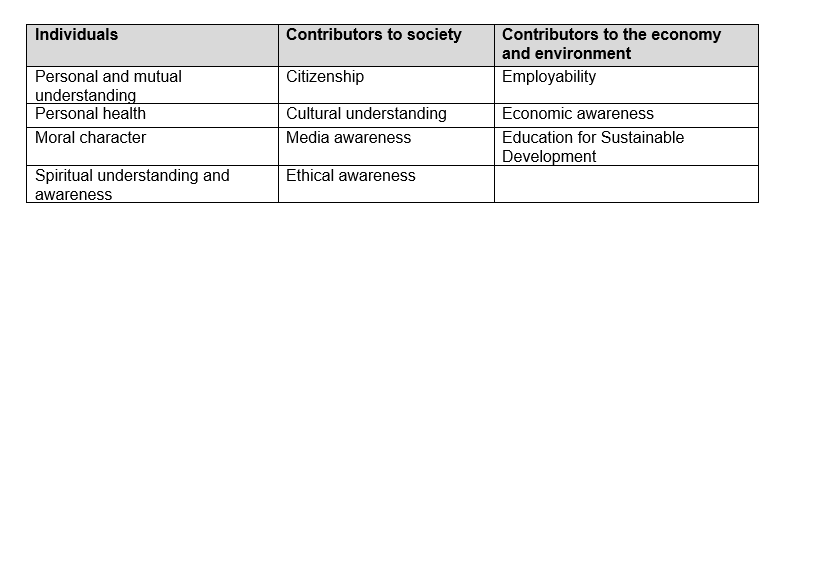UNA-UK's International Days resource can contribute to delivering all areas of the entitlement curriculum that primary and secondary schools are statutorily required to provide for young people:
- Programmes of study in National Curriculum subjects, which outline the minimum subject content encompassing the core knowledge and understanding that should be taught to all young people. The chart below highlights the subjects that each of the 29 International Days supports in terms of core knowledge and understanding.
- A personal, social, health and economic education (PSHE) programme with schools free to address the topics most relevant for their young people and to draw upon resources and support from organisations as they feel appropriate. There is no standardised framework or nationally produced programmes of study for PSHE but a guidance document is available here.
- Through PSHE programmes, schools seek to involve children and young people in developing critical thinking skills and attitudes and values to participate as well informed and active citizens. Such values and attitudes will include: developing a personal sense of identity and self-esteem, empathy, a commitment to social justice and equity, value and respect for diversity and a concern for the environment and a commitment to sustainable development.
- The chart identifies those International Days where the both the content and the nature of the active and participatory learning employed provide real opportunities to foster core attitudes and values such as those identified above.
- Schools also have a responsibility to ensure spiritual, moral, social and cultural development (SMSC) amongst children and young people. In England, evaluating the quality of provision for SMSC is now part of the school inspection framework. UNA-ID provides ideas, guidance and resources to support the development of SMSC in lessons across a wide range of curriculum subjects. It also offers suggestions for broader whole-school linking to SMSC development e.g. through assemblies.
- A religious education (RE) programme for all young people in every year group 11-16. There is no national statutory framework for RE but rather syllabi are agreed locally within every local authority in England through a Standing Advisory Council for Religious Education (SACRE), a body which advises local authorities in England and Wales on the content which should be included in religious education teaching at state schools. The principal objective of RE is to promote pupils’ spiritual, moral and cultural and mental development. Since there is no national syllabus for RE in England it is difficult cross-reference UNA-ID with the content of the RE offer in every local authority. However, the chart seeks to highlight those International Days which are most likely to contribute in terms of both content and spiritual, moral and cultural development to RE programmes in England.
- The provision for a daily act of collective worship for all young people which, amongst other things, promotes a common ethos and shared values and enables young people to consider moral issues and to explore their own attitudes and beliefs. Generic guidance is provided here.
Each of the 29 International Days can form a natural focus for collective worship in schools (as identified in the chart) as many not only includes knowledge and understanding about relevant and challenging moral and ethical issues but also support children and young people in their emotional development e.g. making informed decisions, maintaining open mindedness and developing a sense of common humanity and common needs.
UNA-ID will also make a valuable contribution to the work of schools who have registered to pursue the Global Learning Programme curriculum framework as a means of highlighting key development and global issues with children and young people at all stages of learning.
Subject-specific links
The chart cross-references each of the International Days to the four statutory areas of the school curriculum listed above. Using it in conjunction with the following extracts from the National Curriculum programmes of study will hopefully assist teachers in making optimum use of the UNA-ID in their schools.

